Skin diseases are a significant obstacle to a person’s full life. In addition to causing discomfort and pain, various manifestations on the skin are reflected in appearance, resulting in mental disorders. With the help of complex therapy and a competent approach, specialists manage to combat these unpleasant phenomena. This article provides information on how neurodermatitis is treated in adults.
What is neurodermatitis?
Neurodermatitis is a dermatological disease that becomes chronic over time. Pathological manifestations can begin in early childhood and bother the patient throughout his life. Relapses of this disease make themselves felt at any age and at different intervals.
According to the ICD, neurodermatitis is part of the group of allergic dermatoses and is considered the most common skin disease. More than 30% of patients who sought help at the hospital were registered.
Externally, the affected areas appear in the form of papules. These are flat, oval-shaped formations, accompanied by severe redness, blistering and unbearable itching. The skin at the affected sites becomes dry and begins to peel.
Adults suffer more from focal neurodermatitis. In this case, skin inflammations are localized in different places of the body. Lesions can affect the bends of the elbows and knees, the back of the head and the adjacent area of the neck. In men, the rash may appear around the anus and scrotum.
Diffuse rashes of neurodermatitis (atopic dermatitis) are characterized by more extensive areas of localization. They can spread to the skin of the face, neck, chest and curves. In medical reference books you can see photos of neurodermatitis at the stage of its exacerbation.
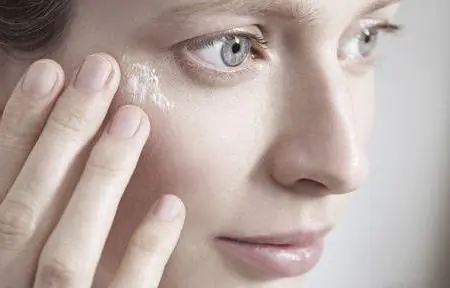
Forms of the disease
Depending on the location of the painful lesions, neurodermatitis is divided into the following types:
- Linear. The rash spreads to the scalp, legs, arms and flexure areas. It is difficult to treat because it becomes chronic over time. Treatment of neurodermatitis on the hands is complicated by the fact that the patient constantly has to expose the skin to contact with soap products. This increases pain, dries out the skin and promotes the formation of crusts.
- Limited. The name speaks for itself, since the lesions affect small areas of the skin. Places for their localization are such parts of the body as the groin, knees, thighs and genitals. A similar form of neurodermatitis on the legs is often found. The appearance of lesions is accompanied by severe irritation. After scratching such areas, the lesions take the form of papules and may become covered with scales. With this form of neurodermatitis, auxiliary measures to combat it are necessary - with the help of healing mud and electrophoresis. Ultrasound is used to treat lymph nodes.
- Diffuse. One of the most harmful skin diseases. In addition to the fact that it affects many parts of the body, it also affects the face. Rashes are observed on the eyelids and lips. They can also appear on the inner sides of the elbow and knee bends. Relief from such conditions is achieved through ultrasound sessions and physical therapy.
- Follicular. Characterized by rashes on areas of the skin with hair. The inflamed areas are reddish in color and often covered with a whitish coating. Its main location is the scalp under the hair. Against the background of such manifestations, many patients experience mental disorders.
- Psoriasiform. Affects the head and face area. Accompanied by constant itching. When such painful lesions occur on the head, partial baldness sometimes occurs. Dense red spots of this type of disease are characterized by scales similar to psoriasis.
- Hypertrophic. Affects the intimate parts of the body in both women and men. In the latter, the groin area is often affected. Treatment of hypertrophic neurodermatitis can be very problematic and is accompanied by nervous disorders in patients.
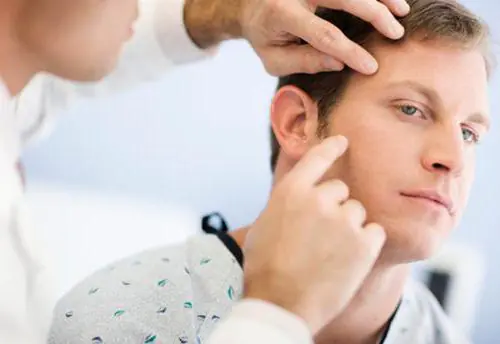
Causes
Doctors identify two main causes of this disease: endocrine disorders and a reaction to stress on the part of the nervous system. These factors are considered endogenous, since they provoke the onset of the disease from the inside.
The cause of rashes that appear under the influence of external factors (exogenous) is allergies. In this case, lesions on the skin are formed under the influence of antibodies from the outside. Manifestations caused by this factor may occur after skin contact with allergens to which the human immune system may be too sensitive.
According to some scientists, neurodermatitis is a hereditary disease, but this fact is not scientifically substantiated. However, many experts argue that a genetic factor is the main cause of this disease.
In addition, there are a number of factors contributing to the development of atopic dermatitis (neurodermatitis):
- nervous disorders;
- weakened immune system;
- disturbances in metabolic processes;
- chemical poisoning;
- malnutrition;
- prolonged stress;
- environmental pollution;
- excessive mental stress;
- heavy physical activity;
- predisposition to allergic diseases;
- bad habits.
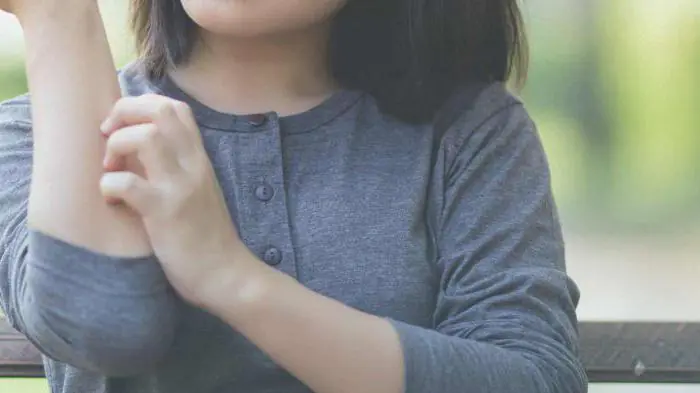
Symptoms
External symptomatic manifestations include the following:
- roughening of the skin in the affected areas;
- irritation accompanied by itching;
- redness;
- excessive dryness;
- skin peeling;
- the appearance of small dropsies that develop into ulcers;
- formation of wet crusts;
- hyperpigmentation;
- cracks.
Symptoms of neurodermatitis in adults are not limited to external signs. Skin disease affects many functions of the human body. As a rule, such people are prone to apathy, feel depressed and suffer from chronic fatigue. Sometimes the patient may not be left with an obsessive feeling of anxiety, resulting in sleep disturbance.
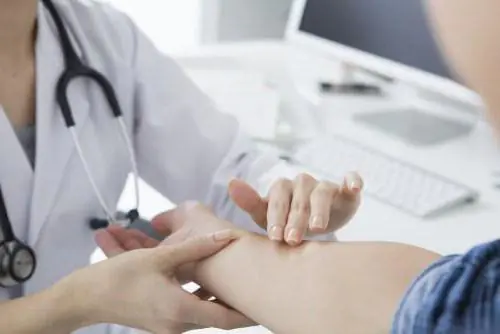
Treatment
During the discussion, it becomes clear that a disease such as neurodermatitis has several causes. Its symptoms are also quite varied and occur in different ways, which makes it difficult to combat. However, the good news is that with the help of a competent approach, medical workers are able to transfer the acute stage of the disease into a state of long-term remission, which significantly mitigates the pathological manifestations.
Experienced allergists and immunologists first try to identify the exact cause of the disease. This is the only way to choose the right treatment. The medication course is always aimed at eliminating the external source that serves as a provocateur of the disease. Therapy for skin diseases involves simultaneously combating cause and effect. This includes the use of ointments, mud baths, ultrasound sessions, taking specific medications, electrophoresis and traditional methods.
Treatment of neurodermatitis in adults should take place in a calm environment. It is good if it is inpatient, since the patient needs to be protected from unnecessary emotional worries. It is important to monitor your diet and practice good hygiene.
The treatment complex includes antihistamines that protect the body from allergens. They neutralize the effects of synthetic and various other substances that cause allergic reactions. Such drugs are: “Chlorpheniramine”, “Cetirizine”, “Loratadine”, “Promethazine”.
In most cases, treatment of neurodermatitis in adults is not complete without sedatives. A popular drug in this regard is Novo-Passit, as well as medications containing motherwort and valerian.
To normalize the functioning of the digestive organs, Linex, Festal, Pancreazim, and Hilak Forte are prescribed.
Immunomodulators are mandatory. The doctor selects medications for treatment depending on the degree of skin damage.
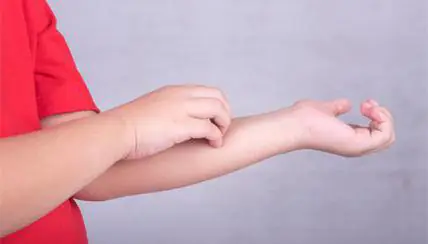
Local remedies are usually prescribed for a limited form of the disease. There is a wide selection of such drugs, but in each individual case they are selected individually. Among glucocorticoid drugs, the doctor may prescribe Betamethasone, Fluticasone or Clobetasol. There is an effective ointment for neurodermatitis with naphthalan oil. Tar products and various cream-gels give good results. Dermovate cream helps to cope well with local symptoms. It quickly eliminates pain and burning. It is important to remember that you cannot buy ointment without a dermatologist's prescription. Self-medication will most likely aggravate the development of the disease rather than help fight it.
Physiotherapeutic procedures
Treatment of neurodermatitis involves taking hydrogen sulfide and radon baths, as well as ultraviolet irradiation. It is good to alternate such methods with medicinal herbs. Baths with decoctions of chamomile, string and oak bark have an anti-inflammatory effect.
After completing the procedures, painful lesions are lubricated with fatty oils, for example, olive. Sulfur and ichthyol ointments are used.
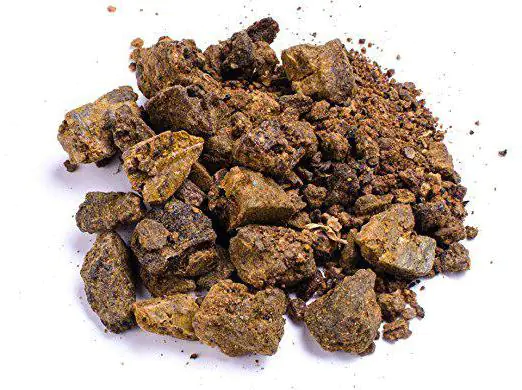
Treatment of neurodermatitis on the face
In addition to the common causes of atopic dermatitis, a rash on the face may appear due to the use of cosmetics or an allergy to animal hair. Even fur clothing or plant pollen can become an allergen.
As a rule, rashes in prominent places are accompanied by various complexes that can cause irreparable harm to mental health. Therefore, it is better not to delay the treatment of neurodermatitis on the face in adults.
- The medications prescribed are hormonal, antihistamine and sedatives.
- In most cases, experts consider it advisable to use sorbents. Activated carbon, Enterosgel and other similar agents are prescribed.
- Birch tar, zinc and dermatol agents are prescribed as ointments. To relieve irritation, you may need to use drugs - Flucinar and Elokom
- Physiotherapy is carried out using the following methods: ultrasound, selective phototherapy, ultraviolet light, electrosleep, hyperbaric oxygenation, laser therapy.
- Baths with the addition of salt and pine needles are used.
- Your doctor may prescribe additional products to prevent dry skin. During the period of remission, moisturizing creams must be used regularly. By the way, this also applies to skin care on the legs and arms. With atopic dermatitis, these parts of the body are more susceptible to external factors, and this leads to excessive dryness.
- Vitamin complexes must be included in the treatment. This is necessary to strengthen the immune system. The presence of vitamins such as A, B and E is especially important.
- Some benefits come from visiting spas and traveling to southern resorts.
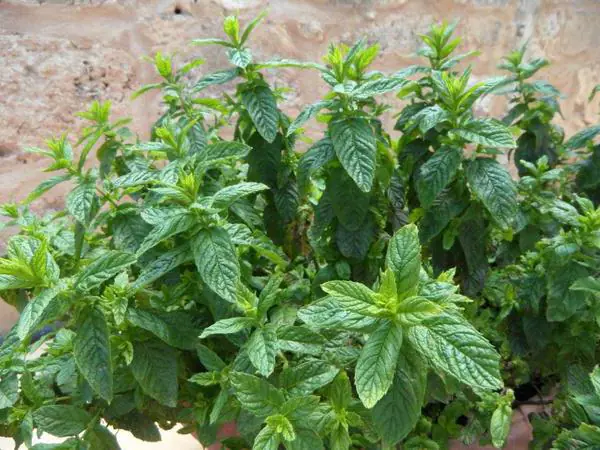
Nutrition and some recommendations
A diet for neurodermatitis involves avoiding all foods that cause allergies. These include: chocolate, bananas, nuts, citrus fruits, chicken eggs, honey. Smoked meats, coffee, strong tea and spicy foods are also excluded.
Red fruits and undiluted fresh juices can increase skin irritation. Preference is given to green apples, black currants, plums and other fruits.
It is recommended to consume milk soups and porridges, rabbit meat, turkey and beef. You can include some types of lean fish and fermented milk products in your diet.
Dried fruits and jelly can replace sweets and flour products.
It is better to cook, stew or bake in the oven. To prepare soups you need to use a second broth. Nutrition should be uniform - 3-5 meals per day.
During exacerbation of the disease, you should not drink alcohol.
Since personal hygiene for atopic dermatitis is of great importance, products such as creams, lotions, soaps and shampoos should be purchased in consultation with a specialist.
It is undesirable to wear clothes made of synthetic fabrics and pure wool. It is better to wash things with laundry soap.
It is necessary to wash your face and hands in warm water. After this, apply cosmetic milk or cream. This will help reduce dryness and flaking of the damaged areas. Well-moisturized skin feels less itchy and tight.
Traditional methods
At home, you can make an ointment for neurodermatitis based on Vaseline. It is combined with substances such as propolis or mumiyo in a ratio of 1:10. For this purpose, Vaseline is heated to a liquid state, mixed with one of the above components and cooled.
After using such folk remedies, neurodermatitis goes into remission much faster. Shilajit has an antimicrobial effect and eliminates pain. Propolis is an excellent analgesic and takes an active part in the regeneration of affected cells.
Ointments should be rubbed in with very light movements. You can also apply them to a sterile bandage and cover the affected areas with them.
It is good to use blue clay masks with added salt. It is applied to the lesions and kept until completely dry.
Herbal lotions are effective in treating neurodermatitis in adults. To relieve inflammation, infusions are prepared strong. Add 15 tablespoons of dry herbs to 1 liter of boiled water. They are poured with boiling water and left for about 10 hours. To prepare such a remedy, you need the following plants: chamomile, mint, marshmallow root, string, juniper, thyme, oregano, St. John's wort.
It should be remembered that traditional methods are not a panacea for the disease. Although their use does occur, they still play a supporting role in complex treatment.
Finally
Having received specific information about neurodermatitis (photos of symptoms in the article) and studied it carefully, you can draw certain conclusions. However, this does not mean that you need to make a diagnosis yourself. The final word should remain with the attending physician. A specialist must prescribe qualified treatment and monitor the progress of this process.
Neurodermatitis is a recurrent, chronic disease of neurogenic-allergic nature. Once it appears, the disease can manifest itself under the influence of all sorts of negative factors, causing significant discomfort of a physical, aesthetic and psycho-emotional nature. The task of doctors is to promptly stop the spread of symptoms during relapses and strengthen the barrier functions of the body during remissions. The quality of life of the patient depends on the correct actions of the leading specialist.
Description of the disease
Neurodermatitis is known to many as atopic dermatitis. People learned about such a concept as “atopy” in the last century - 1923. Scientists have designated the term an abnormal immune response to allergens. Conflicting medical opinions led to the diagnosis of “neurodermatitis,” which led to speculation about the connection between the pathology and dysfunction of the nervous system.
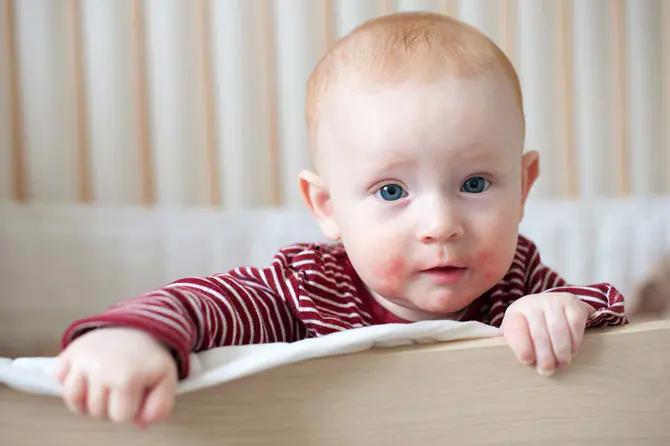
In the modern world, the two concepts have been combined, since in childhood, atopic dermatitis is a common diagnosis, and its clinical manifestation is associated with the influence of predominantly food allergens. Neurodermatitis in adults usually manifests itself as aggressiveness after a viral illness or stress.
Causes of neurodermatitis
It is worth noting that the disease is under study and it is difficult to accurately determine the cause of neurodermatitis on the skin. The experience and professionalism of practicing dermatologists suggests the following possible negative factors stimulating the activation of the disease:
- intoxication of the body for various reasons;
- work in enterprises with hazardous production;
- non-compliance with diet, abuse of unhealthy food;
- psycho-emotional overload;
- continuous physical stress;
- lack of daily routine;
- overwork;
- disturbing sleep;
- chronic pathologies of the digestive system;
- negative environmental influences, the effect of allergens;
- change in social situation, a series of negative events, negative emotions;
- individual character trait (vulnerability, isolation).
From the above listed variety of possible causes of neurodermatitis, we can conclude that the disease develops according to one of the theories:
Neurogenic
According to the theory, a violation of higher nervous activity occupies a leading position in the genesis of the disease. In the process of dysfunction, pathological discoordination of nervous processes occurs. In patients with neurodermatitis, a direct connection is observed between the formation of lesions and dysfunction of the nervous system. They mostly notice the manifestation of exacerbations against the background of stressful situations, and it should also be noted that anxious, impulsive, hot-tempered and tense people are more prone to the development of pathology.
Allergic
It is explained by the body’s hypersensitization to allergens of food, chemical, and medicinal nature. According to the theory, a harbinger of the development of allergic neurodermatitis may be exudative-catarrhal diathesis in infancy. The fact that the pathologies are closely related is indicated by the parallel course of allergic dermatosis with urticaria, hay fever, asthma, and conjunctivitis of an allergic nature.
Hereditary
The reason for the existence of the theory is sociological and scientific research, according to which more than 55% of patients have a genetic predisposition to neurodermatitis due to the diagnosis of the disease in close relatives.
In order to select an effective, comprehensive treatment, it is important to establish a negative factor and eliminate or minimize its impact on the patient. An individual approach is selected for each patient.
When treating neurodermatitis, you should be prepared for a long course and forced changes in your usual way of life. Only a doctor can provide qualified assistance.
Depending on the area occupied by the foci of neurodermatitis on the skin and the characteristic signs, the pathology occurs in the following possible forms:
- limited - manifested by localization on individual, small fragments of skin - focal neurodermatitis;
- disseminated - characterized by the fusion of several areas with limited neurodermatitis;
- diffuse - spreads in the form of diffuse lesions, without clear separation of boundaries (face, neck, upper limbs, knee joints).
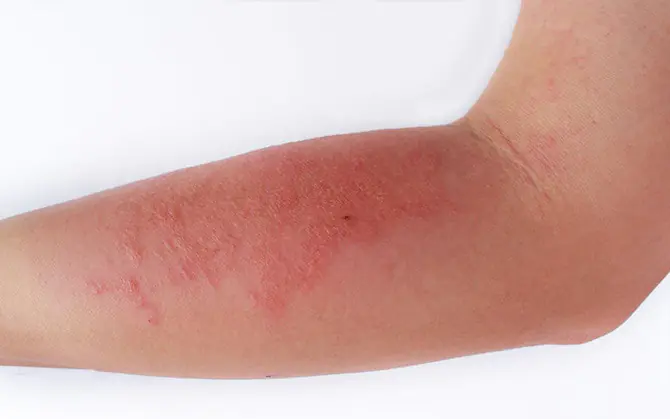
Since the nature of skin changes is not clear, doctors divide the disease into types:
- Psoriasiform – mainly the spread of neurodermatitis on the face and scalp is observed. The symptoms are partially similar to psoriasis and are accompanied by areas of peeling.
- White – manifested by areas of depigmentation.
- Decalvating - doctors record lesions of the scalp. The clinical picture of neurodermatitis on the head is manifested by alopecia.
- Hypertrophic – affects the groin area. The disease can manifest itself at any age and make itself felt throughout life (tumor changes on the skin).
- Linear - diagnosed by characteristic skin manifestations with clear linear neurodermatitis in the form of stripes.
- Follicular – determined by the formation of papules, with characteristic pathological sharp ends in areas of hair growth.
Adequate treatment of neurodermatitis is possible only after an accurate diagnosis and determination of the cause of pathological changes. Only the attending physician can prescribe treatment regimens.
Today, diseases are usually explained by psychosomatics; neurodermatitis and its development also have its own reasons for its appearance. You can be skeptical about science, but there is some correlation between skin manifestations and a lack of maternal love, the need for protection from external negative factors, or the development of complex partnerships.
Symptoms of neurodermatitis
For the first time, a person encounters signs of neurodermatitis in the first months of life. The clinical picture is characterized by characteristic signs:
Behind the ears, in the area where the fontanel is located on the eyebrows, yellow scales form, which have an oily structure and are easily scraped off.

Babies may develop milky scabs in the form of yellow-brown crusts on the cheeks. If the process is not stopped, the disease becomes chronic with wider symptoms. Lesions are detected on the mucous tissues of the genitals, eyes, nose, and in the folds of Denny Morgan. Crusts appear on the papules, which become denser and rougher over time. Mostly periods of exacerbation are characteristic of the winter period. In summer, the disease may be in remission.
Itching is the main symptom of neurodermatitis on the body. Symptomatic treatment should be carried out in a timely manner to prevent scratching of wounds and the addition of a secondary infection against the background of a weakened immune system.
The limited form of the disease is characterized by the following symptoms:
- local plaques the size of a palm on the side or back of the neck;
- neurodermatitis on the elbows;
- severe itching;
- lesions in the inguinal-femoral folds, scrotum, labia, between the buttocks;
- neurodermatitis on the legs;
- formation of a zone of lichenification with disseminated papules along the boundaries;
- hyperpigmentation, with the formation of discolored areas of the skin.
The appearance of diffuse neurodermatitis is quite predictable. It tends to form in cases of a history of exudative diathesis, eczema in children, and neurodermatitis. The form of the disease is characterized by the following symptoms:
- damage to the surface of the face, with a clear contour on the lips due to neurodermatitis - atopic cheilitis;
- foci of neurodermatitis on the arms and legs with concentration on the joints of the extremities;
- fragments of lesions on the chest and inner thigh;
- in places where the lesions are located, the skin is dehydrated and hyperemic;
- lichenized areas with excoriations and crusts;
- The boundaries between healthy and affected skin are not clearly defined.
Since the pathology occurs with annoying itching, which gains intensity at night, the patient complains of irritability, insomnia, neurotic disorders, depression, and emotional discomfort. The dermatologist must first of all save the patient from suffering and prevent the development of complications.
Diagnosis of neurodermatitis
The first signs of skin discomfort are a reason to seek help from a therapist. The doctor prescribes a number of mandatory laboratory tests:
- blood chemistry;
- Analysis of urine;
- stool examination;
- allergy tests.
If symptoms clearly indicate neurodermatosis, the doctor issues a referral for examination by a dermatologist or allergist.
The clinical picture is quite pronounced and after listening to the patient’s complaints and collecting an anamnesis, establishing a diagnosis is not difficult.
Treatment of neurodermatitis
The disease is under study, but a competent specialist can determine the cause that triggered the development of the pathology. A successful outcome of therapeutic actions is achieved through an integrated approach to solving the problem. First of all, the negative factor should be neutralized, after which systemic and local effects are carried out. Non-traditional methods and the influence of physiotherapeutic procedures on the affected areas have proven themselves well.
Tablets for neurodermatitis with a sedative effect, in combination with ointments and folk recipes, will certainly speed up the healing process.
Antihistamines
Antiallergic drugs for the treatment of neurodermatitis of the 2nd and 3rd generation tend to smooth out symptoms without causing side effects and a detrimental effect on the central nervous system. The dose of drugs based on loratadine, ebastine, cetirizine, torfenadine is determined by the leading specialist, taking into account the characteristics of the patient (Claritin, Zodak, Zyrtec).
Nonsteroidal drugs
In case of exacerbation of the disease, intravenous injections are prescribed. Sodium thiosulfate and calcium gluconate stop the growth of lesions and quickly smooth out symptoms. If an infection is associated with a severe form, it is advisable to use broad-spectrum antibiotics (oxacillin, dicloxacillin, erythromycin).
Glucocorticoids
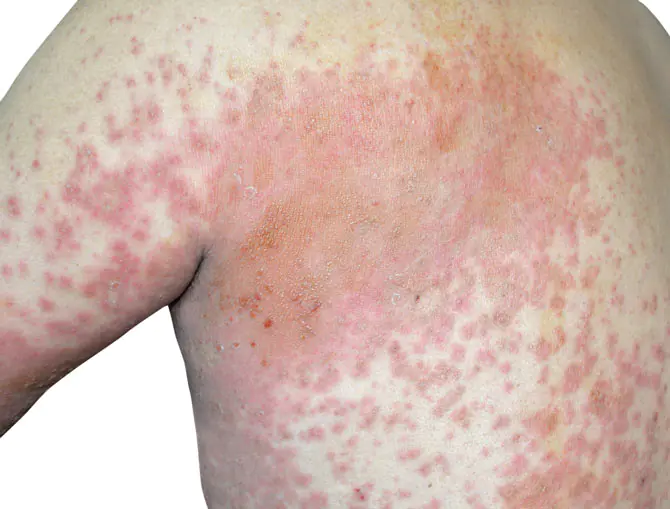
For more complex forms of neurodermatitis, medications containing hormones may be prescribed. The rapid action of glucocorticoids relieves itching and inflammatory processes (prednisolone, dexamethasone).
Treatment with ointments
External methods of influencing the lesion involve the use of gels, creams, and ointments for neurodermatitis. Having direct interaction with the pathological fragment of the skin, they achieve quick relief from irritating symptoms. It is worth noting that the formulations are divided into topical glucocorticosteroids and non-hormonal ones.
-
Hormonal ointments for neurodermatitis - indicated for chronic cases:
"Advantan";
"Lorinden";
"Celestoderm";
"Afloderm".
Before using external hormonal drugs, you should consult a doctor and read the instructions.
If the treatment of neurodermatitis on the hands is easy to carry out during the day using antiseptics, then it is recommended to treat hard-to-reach places with ointments and gels.
Physiotherapeutic treatment
When the disease becomes chronic, the following procedures may be prescribed, taking into account contraindications:
- ultraviolet;
- ultrasound;
- electricity;
- magnetic therapy;
- ozone therapy;
- heat therapy;
- oxygen.
Often, combined treatment with chemicals and physical effects helps improve the result. Dermatologists note the particular effectiveness of the use of light therapy, laser and reflexology.
Treatment of neurodermatitis with folk remedies
- Vinegar solution.
For sudden itching, rubbing the skin with apple cider vinegar helps:
Dilute 1 part vinegar with 2 parts water and moisten the itchy area on the skin with a cotton swab. Apple cider vinegar stabilizes the protective properties of the skin.
Infusions
- Hazel infusion.
1 tbsp. l. crushed hazel leaves (hazelnuts), brew 200 ml of boiling water, leave until cool, strain.
Drink 50-70 ml 3-4 times a day before meals.
The infusion of leaves can be replaced with a decoction of hazel bark and taken in the same dosage.
Decoctions
- Oat decoction.
Prepare a decoction of oat straw in a ratio of 1:10. Wash the skin with a decoction for neurodermatitis.
Collection decoctions
- Collection decoction No. 1.
Take 10 g of sage herb, plantain and nettle leaves, corn silk and juniper berries; 15 g each of St. John's wort, yarrow and horsetail; 5 g of wormwood herb.
3 tbsp. l. pour 500 ml of boiling water over the crushed mixture, leave for 1 hour, strain.
Drink 150-200 ml with sugar in 30 minutes. before meals.
Remember! The collection includes poisonous plants. Follow the dosage!
Treatment of neurodermatitis with ointment
- Healing ointment made from spruce resin.
Take 20 g of spruce resin (resin), 1 crushed onion, 50 ml of vegetable oil and 15 g of copper sulfate.
Grind all the ingredients and heat over the fire, without bringing to a boil.
After cooling, the ointment is ready for use. Has a burning effect.
Diet for neurodermatitis
To help the body cope with the disease and improve the general condition, and have a positive effect on symptoms, one should reconsider the usual way of life and, first of all, gastronomic preferences. Your doctor will help you determine the list of products included in the menu for neurodermatitis that you need to focus on.
Dietary nutrition for neurodermatitis| LIST OF ALLOWED PRODUCTS | PRODUCTS NOT ALLOWED IN FOOD |
|---|---|
| Lean meat: beef. Veal, rabbit, turkey, chicken | Reduce to a minimum the consumption of animal fats, including eggs, cheeses |
| Lenten fish | Avoid salt and pickles |
| Fresh greens and vegetables, mainly spinach, leeks, broccoli | Desserts, sugar, industrial sweets are replaced with natural treats |
| For desserts: baked fruits, dried fruits, freshly squeezed juices (not citrus fruits) | Do not eat meat sausages or smoked products |
| Kefir, fermented baked milk of moderate fat content - recommended a couple of hours before going to bed; add goat milk and kumiss to your diet | Avoid products colored with dyes, with the addition of preservatives, flavors, flavor enhancers, emulsifiers |
| Mineral water, green tea, mate, mint, calcium water | Limit alcohol consumption, do not drink wine, beer, or carbonated drinks at all. |
| Doctors recommend enriching your diet with rice and potatoes | Avoid fast food and street food |
Diet for neurodermatitis is an important component of an integrated approach to treatment. Sometimes, by eliminating certain foods, the patient feels relief and gradually gets rid of the annoying illness.
Prevention and prognosis
The prognosis depends on the form of the disease. Limited neurodermatitis occurs more easily. The diffuse form forces the patient to concentrate on his condition, provoking psycho-emotional disorders. Symptoms of the disease significantly affect the patient’s quality of life and interfere with productive work. It is difficult to predict the outcome of treatment. There are many cases when there is a sharp improvement and spontaneous recovery of the patient.
Preventing the worsening of signs of pathology falls on the shoulders of the parents, since after the birth of the baby one should correctly approach the issues of nutrition and the prevention of neurodermatitis.
- do not give up breastfeeding;
- introduce complementary foods in accordance with the pediatrician’s recommendations;
- eliminate food allergens;
- strictly follow dietary recommendations;
- eliminate stress factors.
From an early age, parents should pay attention to strengthening the immune system, teaching them to follow a healthy diet, and developing a love of sports - this will help prevent the appearance of neurodermatitis in adults.
Complications
Since even the older age group cannot withstand severe itching, the patient scratches the lesions, weakening the barrier functions of the skin, which opens the gates for infection. Before starting treatment for neurodermatitis in children, it is important to eliminate the symptoms that cause irritability and anxiety.
Common complications may include:
- Bacterial infection. Penetration of the pathogen Staphylococcus aureus into the focus leads to the appearance of erythema, exudation, and hardened crusts. The disease can develop into chronic neurodermatitis.
- Viral infection:
- Kaposi's eczema (herpetic);
- warts;
- eczema vaccinatum;
- molluscum contagiosum.
- In half of the patients, cataract is diagnosed as a complication.
Timely consultation with a doctor, avoiding self-medication and unconventional methods of getting rid of the disease, allows you to stop the disease in the initial stages and prevent the development of complications.
Atopic dermatitis, video
Conclusion
Even single fragments of skin lesions due to neurodermatitis are a reason to contact a medical facility. Signs of pathology often indicate dysfunction of the nervous system and signal that the body cannot cope with the problem on its own. You should not try to treat the disease on your own, since eliminating the symptom does not guarantee a solution to the problem.
An allergic disease that occurs as a reaction to external irritants can manifest itself in the form of unpleasant symptoms that bring discomfort. Treatment of neurodermatitis in adults is aimed at eliminating the rash, relieving itching and redness, and cleansing the body. Therapy involves complex measures and must be carried out under the supervision of a doctor, since it is necessary to get rid of not only the symptoms, but also the causes of the disease.
What is neurodermatitis
The disease neurodermatitis is a chronic disease of the skin, the symptoms of which are similar to those of atopic dermatitis. It occurs due to negative changes in the endocrine and nervous system of an adult. Many scientists are inclined to believe that neurodermatitis may be hereditary, but this fact has not been confirmed. People with hormonal or nervous disorders are at risk. For the disease to worsen, you only need an irritating factor. Often this condition in adults is stress or increased load on the body's systems.
Types of neurodermatitis
The classification of neurodermatitis is based on the prevalence of symptoms of the disease:
- Focal neurodermatitis - this type is typical for adults. The rash and other symptoms are concentrated in several locations. The bends of the knees and elbows, the back of the head, and the back of the neck are affected. The rash can occur in the anus, scrotum and inner thighs. If we consider gender, then adult men are more susceptible to this variant of neurodermatitis.
- Diffuse - can appear in a person of any age category. It is characterized by a wide area of distribution, which includes the chest, neck, face and skin at the bends of the joints.
Based on the location of the lesions, neurodermatitis is divided into the following forms:
- linear – located on the bends of the limbs;
- follicular - found on the hairy parts of the skin;
- hypertrophic – diagnosed if the manifestations are localized in the groin area;
- psoriasiform - occurs in adults on the surface of the head and neck.
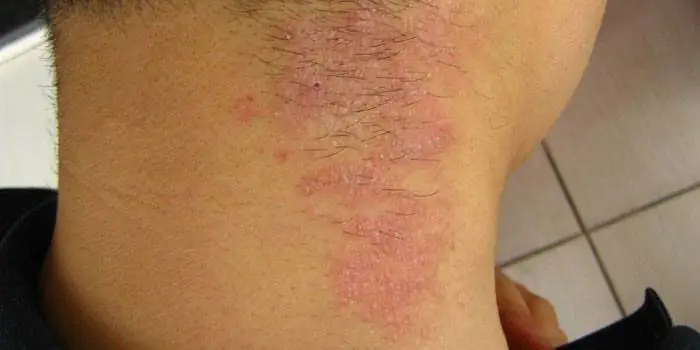
Signs of neurodermatitis
The main symptoms of neurodermatitis in adults have an external manifestation. A rash forms on the skin and redness occurs. These signs are accompanied by dry skin, itching and burning. Rashes in adults can have varying degrees of distribution. The most vulnerable areas of the skin are: neck, bends of limbs, face, torso, head, back, hands. At an early stage of its development, neurodermatitis provokes severe skin sensitivity, which is caused by irritation.
Rashes with neurodermatosis look like papules - bubbles with liquid form on the top of small pimples. If there is no treatment and the disease lasts for a long time, small drops of water burst, forming ulcers, which are subsequently covered with crusts. Itching and burning sensations cause severe discomfort to a sick adult and can cause insomnia.
Neurodermatitis in adults is closely related to instability of the nervous system, so patients may experience the following symptoms:
- feeling of anxiety;
- irritability;
- depression;
- fast fatiguability;
- lethargy and apathy;
- excessive emotionality;
- tearfulness;
- sleep disorders.
Causes of the disease
Experts identify several risk factors that can lead to the development of the disease in adults. However, a reaction in the form of allergic manifestations does not occur in all people predisposed to this. Possible causes of neurodermatitis in adults:
- professional factors;
- bad habits (smoking, alcohol);
- tension associated with prolonged mental or physical stress;
- entry of toxic substances into the body;
- avitaminosis;
- hereditary predisposition;
- improperly organized nutrition;
- stressful situations, emotional stress;
- diseases affecting the gastrointestinal tract;
- contact with allergens that cause neurodermatitis (foods, cosmetics, household chemicals, medications, animal hair).
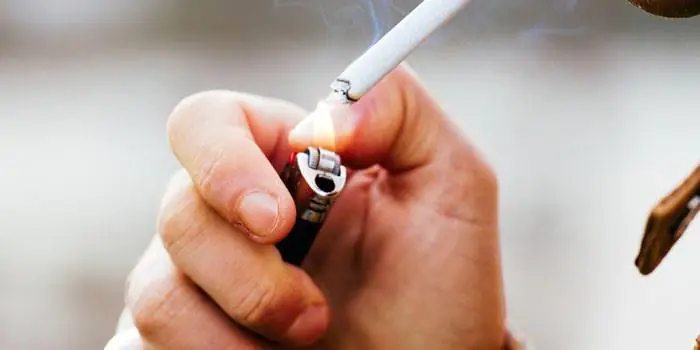
Treatment of neurodermatitis in adults
The mechanism of how to treat neurodermatitis in adults is a complex measure. The process can be carried out on an outpatient basis; hospitalization is required only in severe cases. A favorable prognosis for neurodermatitis in adults is established in most cases. A limited type of disease is easily treatable. Experts use the following methods to cure neurodermatitis forever:
- providing the patient with appropriate care, which includes regular nutrition, feasible physical activity, timely rest and sleep;
- hypoallergenic diet;
- vitamin therapy;
- the use of local drugs that relieve itching and inflammation;
- in severe cases of neurodermatitis, hormone therapy is prescribed;
- the use of antihistamines to relieve the effects of allergens;
- the use of drugs that stabilize the nervous system;
- physiotherapy.
Local treatment with drugs
In addition to tablets that are taken orally, you should use an ointment for neurodermatitis. Such remedies have a local effect and help relieve the symptoms of the disease. Doctors can prescribe 2 types of drugs for adults:
Ointments with glucocorticoids should be used by adults under the supervision of a specialist, as they can cause side effects. Apply the product in a thin layer without rubbing. Therapy with such drugs for neurodermatitis should be carried out once a day. Local medications help stabilize hormonal levels and prevent relapse of the disease in adults. Doctors prescribe the following drugs: Dermovate, Cyclocort, Akriderm GK, Chalcinonide cream for neurodermatitis.
Non-hormonal ointments for neurodermatitis in adults help reduce the severity of symptoms. Such products relieve itching, soften the skin, dry out pimples, and have an anti-inflammatory effect. Popular non-hormonal drugs are:
- Naftaderm - a medicine for neurodermatitis in adults eliminates inflammation, reduces itching, and heals the skin.
- Radevit – starts the process of tissue regeneration, contains vitamins.
- Gistan - used to relieve itching and prevent neurodermatitis and atopic dermatitis in adults.
- Desitin – contains zinc oxide, which has anti-inflammatory and antiseptic properties.
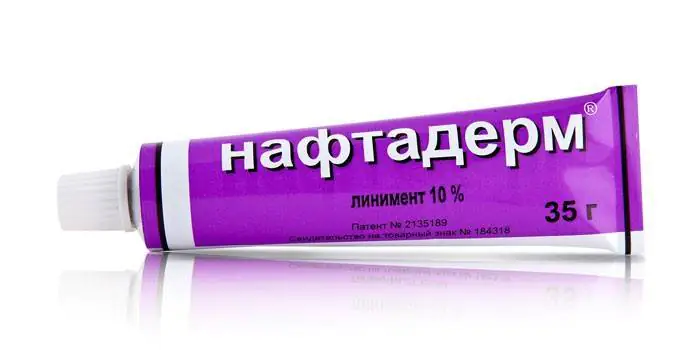
Physiotherapeutic procedures
The phototherapy procedure, pine or salt baths and phototherapy for neurodermatitis in adults are one of the important components of complex treatment. Physiotherapy is recommended after the end of the exacerbation period; its course is up to 15 sessions. To calm the nervous system, suggestive therapy and electrosleep are recommended for adults. If neurodermatitis is limited, doctors may prescribe the use of electrophoresis and mud wraps. Staying in sanatoriums and resorts has a positive effect on the health of adult patients.
Diet
Proper nutrition for neurodermatitis in adults involves avoiding foods that contain large amounts of carbohydrates, salt, and the use of seasonings. During the acute period, it is forbidden to eat food containing allergens and harmful substances:
- meat and fish of fatty varieties;
- food with added artificial flavors and colors;
- seafood;
- citrus;
- eggs;
- chocolate;
- whole milk.
Drinking clean water will be a useful dietary habit - adults need to drink at least 2 liters of it per day. The diet for neurodermatitis should be based on certain products:
- fresh vegetables and fruits;
- low fat fermented milk products without additives;
- dietary varieties of boiled meat;
- porridge;
- low-fat broths;
- drinks: rosehip decoction, green tea, compote, mineral water.
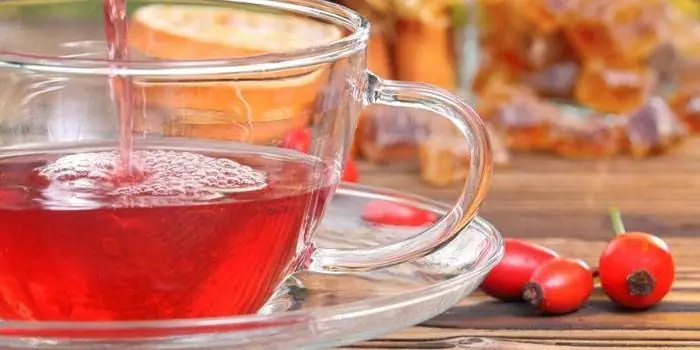
Treatment of neurodermatitis at home
In most cases, neurodermatitis is treated at home. Hospital therapy is indicated only in severe cases of the disease in adults. At home you can use natural folk remedies and medications. Medicines, especially hormonal ones, should be selected by a doctor individually. If you notice symptoms of neurodermatitis, be sure to go to the hospital to determine the cause of the disease.
ethnoscience
Traditional methods of treatment will help eliminate neurodermatitis:
- Baths with wormwood have antibacterial properties, prevent the development of inflammatory processes, and heal skin with neurodermatitis. First you need to make an infusion: pour 1 liter of boiling water over a glass of dry herb, cook for 10 minutes. over low heat. Leave the prepared liquid for half an hour, then pour it into the bath. The therapeutic agent should act on the body of an adult within 15 minutes.
- Homemade ointment will help eliminate focal neurodermatitis. To make it, grind propolis and mix it with lanolin melted in a water bath. Apply the resulting preparation to areas affected by neurodermatitis.
- Constant itching due to neurodermatitis often causes nervous disorders in adults; to calm down, make a special infusion. Take equal parts of angelica leaves, lemon balm, burdock and valerian roots, and violet flowers. Mix all ingredients well. 2 tbsp. l. collection, pour 0.5 liters of boiling water, leave in a thermos for about 10 hours. Adults should drink the resulting drink 50 ml after meals, after filtering.
Preventive methods
Adults at risk need prevention of neurodermatitis. To prevent illness, use the following recommendations:
- create a healthy menu, eliminating allergens;
- choose clothes made from fabrics of natural origin;
- play sports, do exercises;
- with neurodermatitis, it is important for adults to monitor the state of their immunity;
- eliminate frequent stress and overwork;
- Do not use cosmetics with aggressive ingredients if you have neurodermatitis.



